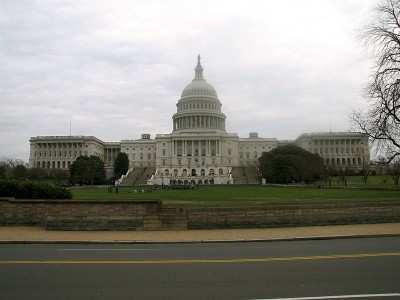Fri, Jul 15, 2011
AIA Concerned By NASA, NOAA Cuts In House Subcommittee Budget
Markup
As the debt-ceiling debate rages in Washington, the Aerospace
Industries Association is expressing concern about cuts being made
to the budgets of NASA and NOAA in the House Appropriations
Subcommittee on Commerce, Justice and Science markup of the fiscal
year 2012 appropriations bill. "We recognize that tough economic
times call for tough choices," said AIA President and CEO Marion C.
Blakey (pictured, below). "However, cutting NASA and NOAA this
deeply threatens American leadership in space and impairs our
ability to make life-saving weather predictions."

The subcommittee's markup cuts NASA's space programs by 10
percent from the President's request and nearly 13 percent from the
NASA authorization passed last October. AIA acknowledges that many
NASA mission areas were adequately supported—but says some
suffered draconian cuts. Given the current fiscal environment, AIA
says it believes the $18.7 billion in funding proposed by the
President provides the minimum required for these important
programs. AIA supports appropriations reflecting the policy
priorities of the NASA Authorization Act of 2010 as closely as
possible and opposes the termination of programs contrary to the
priorities of the Authorization Act.
With the last shuttle mission about to wrap up, Blakey says NASA
must be adequately funded to continue a visible national commitment
to space exploration, science, aeronautics and technology
leadership, and notes that 58 percent of Americans recently
polled by the Pew Research Center supported. "Each ride to the
space station that NASA buys from Russia is the annual equivalent
of 1000 American aerospace jobs," Blakey said. "We should be paying
Americans instead of Russians."

In addition, NOAA would get $1 billion less than the President's
request, an 18 percent cut. AIA says our public safety, national
security and economic recovery argues for fully funding NOAA to get
observing programs back on track and mitigate any loss in coverage
due to aging systems. "The health of our space programs has major
implications for the innovation economy, the national maintenance
of critical skill sets and fostering math and science education,"
Blakey said. "Supporting NASA and NOAA at stable and predictable
funding levels is crucial for mission success, impacting lives, the
economy and our nation's security."
More News
Also: New Lakeland Fly-in!, Gleim's DPE, MOSAIC! Nearly three-quarters of a century in the making, EAA is excited about the future… especially with the potential of a MOSAIC>[...]
Estimated (EST) -When used in NOTAMs “EST” is a contraction that is used by the issuing authority only when the condition is expected to return to service prior to the >[...]
Aero Linx: Regional Airline Association (RAA) Regional airlines provide critical links connecting communities throughout North America to the national and international air transpo>[...]
The Airplane Broke Up In Flight And Descended To The Ground. The Debris Path Extended For About 1,435 Ft. Analysis: The pilot, who was the owner and builder of the experimental, am>[...]
From 2015 (YouTube version): History Comes Alive Thanks to A Magnificent CAF Effort The story of the Douglas C-47 named, “That’s all Brother,” is fascinating from>[...]
 Airborne 07.21.25: Nighthawk!, Hartzell Expands, Deltahawk 350HP!
Airborne 07.21.25: Nighthawk!, Hartzell Expands, Deltahawk 350HP! ANN's Daily Aero-Term (07.27.25): Estimated (EST)
ANN's Daily Aero-Term (07.27.25): Estimated (EST) ANN's Daily Aero-Linx (07.27.25)
ANN's Daily Aero-Linx (07.27.25) NTSB Final Report: Luce Buttercup
NTSB Final Report: Luce Buttercup Classic Aero-TV: 'That's All Brother'-Restoring a True Piece of Military History
Classic Aero-TV: 'That's All Brother'-Restoring a True Piece of Military History




